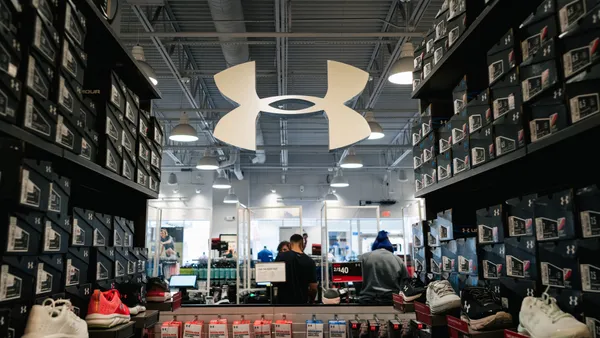Loyalty programs are growth engines for brands, and co-branded credit cards drive up the rewards and benefits available to loyalty program members — making them powerful revenue drivers.
Most “co-brand” card offerings are limited to prime consumers, however. In an environment in which retail sales are slowing — and even high-income shoppers are pursuing value — driving growth requires building long-term engagement across a larger group of customers.
Offering a co-branded credit card option to non-prime consumers enables brands to meet more customers where they are in their credit journeys, and grow their loyalty footprint in a cautious consumer environment.
Building frequency and converting high-intent customers
When average order values go down, you need transactions to go up. Offering a co-branded credit card is one avenue for driving more repeat purchases among customers.
“Brands get a lot of stickiness from their loyalty members, but they get even more visits from their loyalty credit card members,” says Rolando De Gracia, Chief Commercial Officer of Concora Credit. “In general, a customer that shops a brand three or four times a year as a loyalty program member will shop six or seven times a year once they have a credit card relationship with that brand.”
Limiting a loyalty credit card program to prime consumers — those with credit scores of 660 or higher — limits the potential for that brand to increase purchase frequency at large. (Only around half of applicants for private label and non-airline/hotel co-brand cards were approved in 2022.) It also leaves declined card applicants with a negative experience that might cause them to abandon a purchase or walk away from the brand entirely.
A dedicated or second-look non-prime co-brand program, on the other hand, captures those high-intent customers who would otherwise be declined — and have strong loyalty potential.
“When we look at the purchasing habits of non-prime consumers, they're shopping the same brands as prime customers, they just are not able to get on the loyalty credit card products,” says De Gracia. “These shoppers can become highly loyal customers once you give them that credit card acceleration.”
Complementing a prime co-brand credit product
Offering non-prime consumers credit card acceleration does not come at the expense of a prime co-brand program’s success. Rather than replace a prime co-brand program, a non-prime co-brand card provides a powerful entry point for it.
Because individuals’ credit profiles change over time, non-prime co-brand card programs enable brands to capture more customers across different stages of their lives.
“It's a shame to have somebody who is engaged with your brand be declined for a co-brand card, because if you lose them as a customer at that moment it's unlikely that they'll ever come back,” says De Gracia. “By offering an ancillary co-brand product, you can increase the engagement of that customer as they go through different aspects of their credit lifecycle.”
Capturing non-prime customers with an ancillary co-brand product also turns a negative event for the customer (being declined) into a more positive interaction with the brand.
That approval interaction not only creates positive momentum between the customer and brand, it provides a way for the customer to build credit over time — and potentially become a candidate for a prime co-brand product.
“About 30% of our customers will see enough of an improvement in their credit after six months that they actually become eligible for a prime card,” says De Gracia of Concora Credit’s non-prime customer base. “A well-designed co-brand program could have a starter non-prime card with a certain set of benefits, and a prime card — with a higher value proposition — that members can ‘graduate’ into.”
Growing engagement across the customer base
In an environment where raising ticket sizes is challenging, raising loyalty is necessary. Ultimately, brands don’t want to restrict loyalty to high spenders, or let high-intent customers walk away, but their approach to co-branded credit cards is allowing both things to happen.
Rewarding high-spending shoppers with luxury rewards is a loyalty strategy that can only go so far in the current environment. Sticking exclusively with a prime co-brand credit product limits the loyalty power of a brand’s broader customer base, at a time when driving more repeat purchases from all customers is especially important to driving growth.
“Expanding the number of people approved into a credit card product really helps brands grow loyalty,” says De Gracia. "Capturing more people who are interested in their credit card makes it more likely for brands to grow their overall card programs.”
Concora Credit offers co-brand credit card programs for non-prime consumers. To learn more about driving loyalty and keeping your brand front and center with a non-prime co-brand program, click here.










